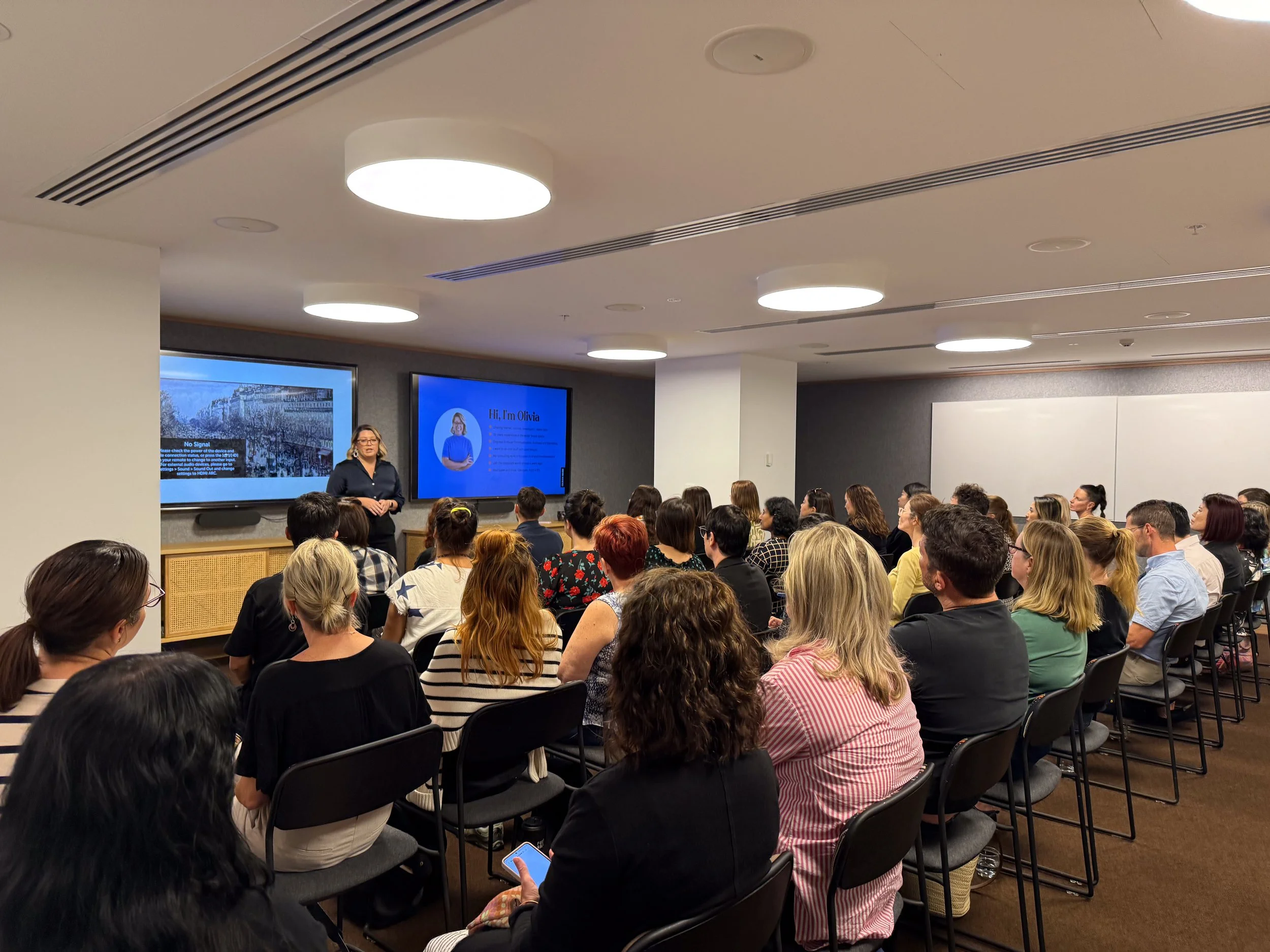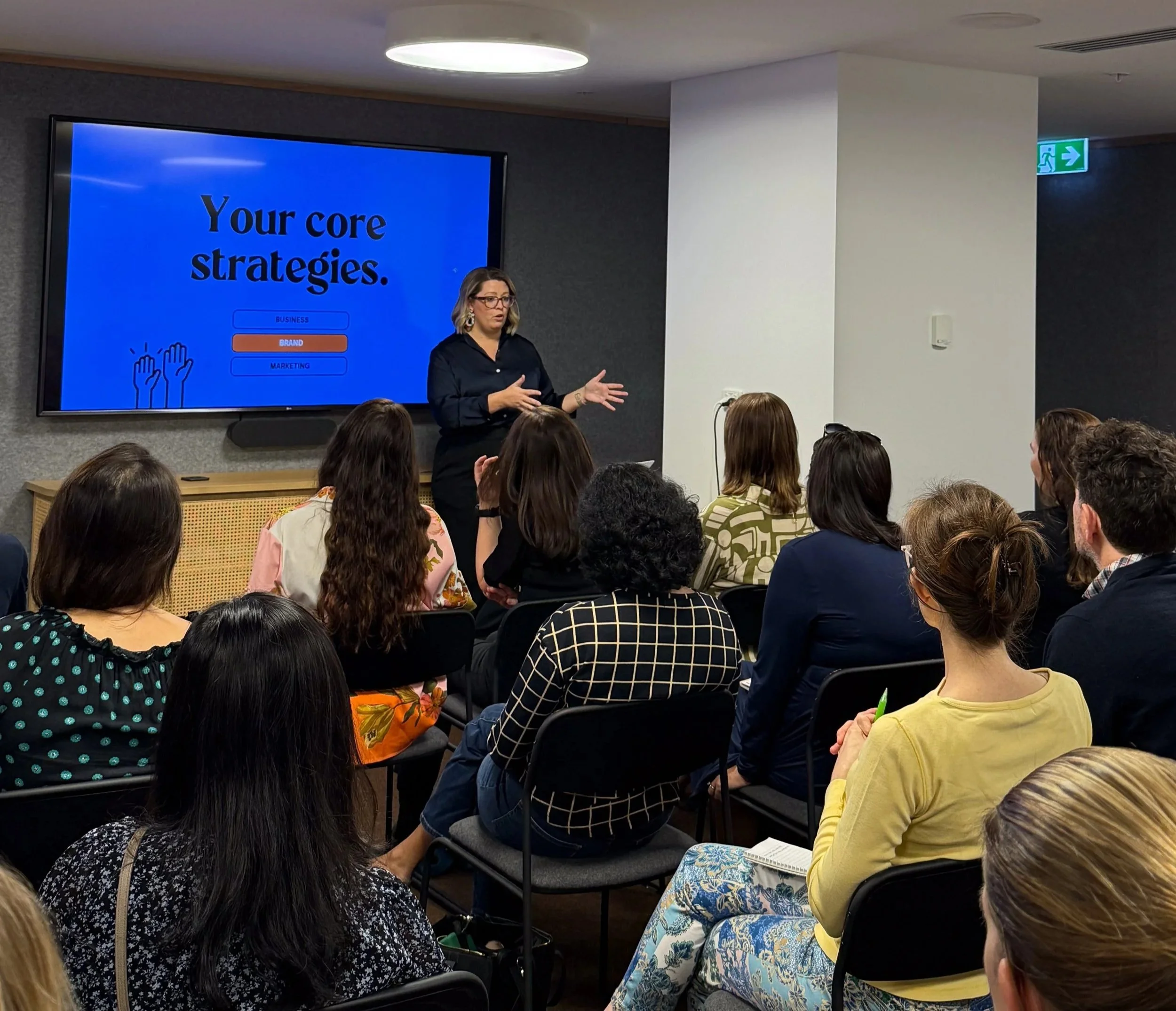Olivia Muir On The Importance Of Strong Brand Identities In The Social Enterprise Space
Olivia Muir is a brand consultant and strategist with an interdisciplinary background and two decades of experience across all facets of brand building - from brand design and creation to brand marketing, research, experience, management, and growth.
As an independent consultant, Olivia works with founders and leaders who are at a point of change in their business journey, helping them elevate, pivot, reimagine or redesign their businesses from the inside out.
Her approach to brand refreshes or rebrands is research-driven and blends business, brand, creative, and marketing strategies to design meaningful change—avoiding vanity rebrands that don’t move the needed. Olivia aligns commercial ambitions with customer-focused brand strategies to solve business challenges, providing clarity and driving growth.
Before starting her consultancy in 2021, Olivia held diverse roles in small business, non-profit, government, cultural arts, marketing agencies, and higher education. She ran everything from grassroots campaigns on an arts budget to leading creative teams to deliver national brand projects and campaigns. Olivia holds a Bachelor of Design and a Master’s in Business (Marketing).
Olivia discusses discusses the importance of brand identity in running a successful business, and how change at a crucial inflection point can lead to immense growth.
Highlights from the interview (listen to the podcast for full details)
[Emma Dimech] - Can you share a bit about your background and what led to your work in branding and marketing?
[Olivia Muir] - I’ve been in branding for over two decades now, which feels incredible. A lot has changed in the industry over that time. I started out in high school, where I had this love for problem solving and creation. Soon after, I started working in design and marketing, and it went from there.
For the last 20 years, I've worked in a number of roles, my most recent as a brand manager for a university. I've worked as a creative director and marketing manager, and community engagement has been a really beautiful role that I've worked in a few times.
Along the way, I’ve done some education around that space as well, but it's really the problem solving that I enjoy. I like to take a step back and see the big picture, and genuinely I just want to help people.
With my work, it’s about seeing what avenues we can take to solve the client’s issue. Sometimes it’s a marketing problem, sometimes it’s a brand problem, sometimes it's a business problem, or even a customer experience problem. I like taking that big picture view while working with my clients, but also in the brand space.
Looking at the different aspects of a brand, it's a lot more than just visual design. Your rebrands transform businesses inside and out. Would you be able to talk about what that means?
It's a funny thing to say from the inside out, but really it just means a rebrand that works. I see a lot of vanity rebrands out there that are just a visual change without any real substance. There's no purpose behind it.
One of the things I'm really passionate about in my space is purposeful and sustainable change for businesses and brands. Not the vanity change, which comes across as just a new coat of paint or new veneer, while nothing has changed on the inside.
Really, a new logo is not going to help anyone. There needs to be a deeper understanding to the change. Sometimes my clients don't need a new logo, it's about filling that strategic gap.
Building that meaning is especially important for service-based industries. Product brands have a different approach with their rebranding because it's so consumer focused. They’re in a supermarket and it's about visual grab. When it comes to service-based businesses, it's the experience that they're selling. It has to be so much more than just a new logo or new colour.
When it comes to creating strong, standout brand identities, what are some of the considerations for founders and leaders to ensure that they get this right?
Go back to your foundations. Don't look at it as a logo or a visual identity project, think of it like a strategic transformation. Be really clear on why you're seeking that change and what you hope this new identity will help you achieve because the rebrand at the end is not the goal, it's the shift you're hoping to create. For founders or leaders listening, strategically shifting your perception is really the goal.
When you're seeking a rebrand, there's either an identity problem for the brand itself or a perception problem. Especially founder-led businesses, going along the path for a rebrand might be through this identity shift. It could be their values, it could be how they see the world, their beliefs, or it could be about how people are perceiving them externally.
At the core of it, there are two reasons to complete a rebrand. One is to gain greater credibility and trust. You can shift that perception, especially in the social enterprise space, from a passion project to a professional enterprise. Consider, what is that shift you're hoping to create? The flow on effects could be more trust from investors, partners, clients, and an increased ability to deliver on promises.
The second reason is focused differentiation. Differentiation is one of the key components for a brand, especially if there are a few brands doing the same work as you. Differentiation really helps you stand out and you get really clear on your category, the space you want to own, and the value you're offering.
The tangible outcomes are increased investment opportunities and successful tenders and grants. Talent acquisition is another great outcome of a branding piece, as is greater awareness, better performing marketing, and attracting better partners.
When you go back to your foundations, there's a few questions you can ask yourself. Where are we going?
Leaders really need to bring the vision; it's not up to the consultant or the strategist to bring that for them. They need to know what they want to achieve and the reputation they want to create for themselves and the brand.
The next is knowing who you are. What do you believe in? What's important to you? How do you behave and show up? How would someone define your personality? This is the identity piece. Brands have an identity just as people do. Are they calm and comforting? Bold and in your face? We're building this persona and identity for the brand.
I believe brands should be created with the customer in mind because really, the brand is the customer facing version of your business. Your business and brand should also be created together as one, preferably at the same time, but if that's not possible, then your brand strategy should be created in alignment with your business strategy.
A key part of that is getting really clear on who you serve. You need to know your customers, your partners, your community, and why it matters to them. Especially in the social enterprise space, it's more than just customers. You've probably got investors, maybe even government support, and your local community. Understand who you serve, who you engage with, what matters to them, and why they should care. You also need to look at the value you offer them. What is it that you do? How can someone engage with you? What's the transformation you provide and how is that aligned with what they need?
You also have to decide what you want to be known for. This is an essential component to brand strategy, and it's tied to differentiation. What category do you play in and what makes you different? What does that difference mean to your customers? There's no point in being different for different sake; it needs to bring value to your customers.
Branding is literally everything. It sounds extreme, but it really is integral. Your business is your commercial viability, but your brand is how people engage and perceive you.
A lot of people still relate brand to a logo, your colours, or even your website, but those are just the expression of your brand. That is just how your brand shows up in the world.
Your brand is why customers choose you. Every business needs a brand, and every business has a brand, it's just whether it's intentional or not. How I perceive a brand and how you perceive a brand will be different, but that is what we are fighting against.
Everyone has different experiences, different biases, different educations, and everyone will see something differently. A brand lives in people's minds, so unless you are defining that for people and shaping that perception, they'll make that up on their own. Whether or not you do so intentionally, you have a brand, you just don't know it.
When do you think it's the right time for an organisation to consider rebranding versus working to improve the current brand essence and reputation?
A rebrand and a refresh are really the same thing, and they’re just the outcome, not the goal. It's about understanding the gap between where you currently are perceived and how you want to be perceived. If that gap is small, it could just be improving your brand essence, something around copywriting or a refresh to your website.
If that gap is bigger, you might want to consider a rebrand or refresh. Often when we say we need to rebrand, what we're really saying is, I want to change how people see me or how I see myself. There's a disconnect between how you're showing up and how the world perceives you. It all comes down to alignment and whether you are optimising or changing your strategy.
It's really hard to be inside the bottle and read the label, so when you’re assessing that perception gap, sometimes you can't do it on your own. Having an outsider's perspective shines a light on areas that you wouldn't normally see. That's also why it's important to look beyond your direct customers.
In the social enterprise space, there are your stakeholders, the community, your referral partners, and your collaborators. What is their perception of you and how do you want to change that?
When it comes to marketing, in what areas are you seeing impact led businesses fall short?
Not being strategic or different enough. Often, it’s hoping that their values and mission will be enough to give them an edge. That's definitely a social enterprise challenge. You are doing this really amazing work, and you want to share that with the world, but sometimes that mission is not enough. You need to look at differentiation and strategy because you are still a business. What other attributes could you bring into your strategy?
Something that I see often is that most are completing marketing, they have a business plan, but there's a gap in the middle, and that is your brand strategy. The process is business strategy, brand, and then marketing. A lot have the business and marketing, but they miss the brand piece in the middle. That isn’t unique to social enterprise; that's most businesses, especially in the SME space.
The brand piece is the bridge between commercial goals and what you're trying to achieve out there in the world with your community and customers. It really gives what you're doing meaning.
There’s also an issue of not enough resources. Everyone needing to wear a lot of hats is really challenging. There’s also not enough research being conducted. We tend to make decisions on a couple insights we've drawn, but have you challenged those insights? Where do those insights come from? Are they biased? Did you ask the right questions? For a social enterprise, there are many ways you can capture research. The easiest way is interviewing your customers. Talk to customers, your referral partners, and your collaborators.
Ask them to describe your brand in comparison to similar brands on the market. What attributes stand out to our collaborators or community? Ask them why they chose you, what they were thinking at the time, and what really sealed the deal.
What inspiring projects or initiatives have you come across creating social change?
I went on the Impact Boom social enterprise bus tour earlier this year and that was truly amazing. It was such a great initiative and such a beautiful way to meet like-minded people and hear about what everyone's doing.
Green Fox Studio is a business that has stood out to me. I believe I saw them on the news a few years ago, and then seeing one of the founders on the bus tour presenting on a panel was really amazing. I love the story and the commercial model, and I think it's a really great example of how social enterprise reaches commercial goals, while also having huge impact in the world as well. All the challenges they have to go through too, with the government side of things, really puts a new perspective on it for me as well.
What books or resources would you recommend to our listeners?
I've got three different books. Most people will know the first one and that’s Building a StoryBrand by Donald Miller. The book alone is not your strategy, but it will help you express it. It’s about narrative driven expression and knowing your strategy before writing the narrative.
The next is more like a textbook, but in a very practical way, with lots of great diagrams and pictures. It's called Value Proposition Design and it really helps you build products and services with people in mind. It looks at the customer and product fit and makes sure that your services are solving a real need for your customers.
It's very empathetic driven and focuses on understanding the psychology of your customers. What deep pains and desires do they have? When they go to bed at night, what are they thinking? In their day-to-day work, what are they doing? What challenges are they up against? It's a really practical book to help you find that product market fit.
The last book was a game changer for me and it really aligns with brand experience. The Power of Moments by Dan and Chip Heath is focused on the customer experience point of view. In the brand space, customer experience is such a key element. How people experience your brand, the service from going onto your website to meeting you in person, creates the image in their mind about your brand.
If you can create a beautiful customer experience, one that really responds to their needs, then you are creating really great moments for them. That book is all about creating those moments. It doesn't have to be the most amazing experience every time, sometimes it's how you come back from negative moments in the experience that makes it worthwhile. It's also about creating ceremonial moments in the customer experience. If you’re in a high volume, customer facing business, that is a great book to read.
Initiatives, Resources and people mentioned on the podcast
Recommended books
Building a StoryBrand by Donald Miller
Value Proposition Design by Alan Smith, Gregory Bernarda, Alexander Osterwalder, and Yves Pigneur
The Power of Moments by Dan and Chip Heath








